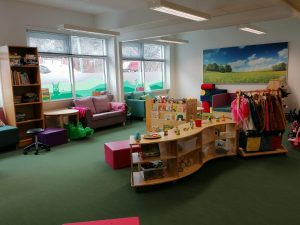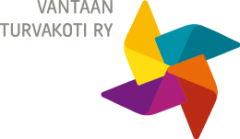Often, people who move from abroad have smaller social networks compared to those born in Finland. An immigrant sometimes must leave family and friends behind to rebuild a new network in their new home. To integrate and socialize in the new society, a person who moves to Finland must be willing to learn and interact with people in their new environment. Meeting new people and learning about the new environment helps relieve the stress of moving to a new country and culture.
A certain kind of stress and uncertainty come with moving to a new country, from one culture to another. This stress can however be reduced, if a foreigner is able to adapt and integrate into the new environment within a shorter period.
For an effective integration to take place, there is a need for the newcomer to get acquainted with the new culture as well as learn about the structure of the new society. An immigrant’s insufficient knowledge and understanding of the host culture significantly slow down adaptation to the new society. This brings about misinformation and prejudices for both the newcomer and the host society. On the other hand, a newcomer can settle down quickly in their new environment when provided with sufficient tools to do so. This is a win-win situation for both parties since it is equally beneficial for the host society that newcomers gain enough skills to be active members of the society.
In Finland, many good structures have been put in place for the integration of foreigners into the Finnish society. Chief among them is the three-year integration services and language course offered to new immigrants. It is expected that immigrants will learn the Finnish language and culture within this period to enable them transition into work life. One practical and effective tool for integration has been informal and low-threshold interactions between immigrants and Finns. It was a well known fact that not every word needed for everyday life in Finland can be learned within the four-walls of a classroom. Moreover, vocabularies learned in a classroom need to be used in real life, and real-life interactions with native Finnish language speakers have been proven to be very effective in the language learning of immigrants. Importantly, real life encounters show the immigrants how the society and people really are. This is very much distinct from what is written and taught in the classrooms.
Due to the relatively reserved nature of Finns and the fact that establishing first contacts with Finns might not be as easy as it happens in the immigrants’ home country, it is even more necessary to make an effort to take first contact. One of the best places to meet new people is at open meeting places found in each city in Finland. Here, the threshold for exchanging first words with new people are low and the visitors can be themselves and can freely interact with others as much as they wish. Most open meeting places operate on the principle of safe space and are discrimination free zone. In this way, all the visitors are guaranteed a safe place where each can be themselves and do not need to be afraid of prejudices or stereotypical attitudes which people from different cultures might have of one another.
It is a known fact that integration is a two-way process; both Finns and foreigners alike must interact and learn from each other. In this way, prejudices and stereotypes about different cultures are easily discussed and right information shared among those involved. Open meeting places provide a great opportunity to meet new people and expand ones’ network, especially for those whose social circles are still relatedly small. As an immigrant myself, I have benefited from visiting open meeting places. I gained new acquaintances and connected with families in similar situation like me as well as learned about various low-threshold services offered to families.
During my work placement at Open Services unit of Vantaa Shelter Association, part of my job was to visit open meeting places around Vantaa with staff of the unit. From my observation, I think that multicultural families are aware of the different meeting places and the services they offer. Majority utilize the open meeting spaces to learn more about the various services available in Vantaa as well as to make new contacts. Most of the visitors come with their children while a few others come to relax and have a good time with other adults. One common thing I observed during my visits is the fact that almost all the visitors of the different meeting places have a common aim of meeting new people, getting peer support and expanding their network.
In addition, visitors are drawn to the meeting places because of the low-threshold services available at the meeting places. All the open meeting places I visited have some service providers doing outreach work for the clients. At Koivukylä open meeting place for example, staff from the City’s library, health center, open services unit of Vantaa Shelter Association, and many others offer services to clients on a low-threshold basis. This way, clients can receive guidance and referral to services they need as well as help with filling official forms, for example, early childhood education forms. The visitors equally have an opportunity to meet experts and workers from open services unit of Vantaa Shelter Association, to discuss about topics ranging from parenting to experiences of domestic violence. The client can equally book an appointment for further individual counsellin when the need arises.
Furthermore, clients of open meeting places are offered tangible assistance that helps them in difficult financial situation. Coffee and tea are always available at the places that I visited. Clients are equally offered lunch at least once a week at both Koivukylä and Hakunila open meeting places. This type of material help is a good relief for families with small children. What’s more, communal cooking, and dining acts as a connecting factor to other parents and their cultures.
One thing I have however noticed at the open meeting place is the fact that majority of the visitors are of immigrant background. There is obviously the need among this client group to meet new people and learn more about the Finnish society. Yet, it is important that immigrant background visitors also get to meet native born Finns for a smother integration process.
The open meeting places is a wonderful idea developed to bring families together and the services are continually developed to meet the needs of its growing client base. I would like to see in the future more Finnish-born families becoming part of the growing number of visitors at the open meeting places around Vantaa and Kerava.

